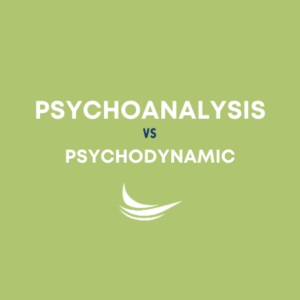 Psychodynamics is frequently misunderstood in today’s world of therapy. Often Sigmund-Freud and psychanalysis come to mind. Sigmund Freud was the founder of psychoanalysis, an approach and theory focused on releasing repressed emotions, with an emphasis on bringing awareness to unconscious emotions and experiences.
Psychodynamics is frequently misunderstood in today’s world of therapy. Often Sigmund-Freud and psychanalysis come to mind. Sigmund Freud was the founder of psychoanalysis, an approach and theory focused on releasing repressed emotions, with an emphasis on bringing awareness to unconscious emotions and experiences.
Did you know that psychoanalysis is different from psychodynamics?
While psychodynamic therapy is similar in that it also originated with Freud and emphasized the unconscious psychological processes, differences include that it is a theory that also includes theories from those influenced by his-life-work-and-theories around topics such as sexuality, dreams, childhood, and personality. Clinical theories are various approaches that help therapists understand clinical presentations. It is a lens or framework that influences the clinical approaches that are used in treatment. Psychodynamic theory is one of these.
Most individuals who seek therapy have a core set of presenting concerns. The language that one uses may differ, but some examples include “emotional distress, suffering, anxiety, depression, feelings of abandonment, unresolved childhood trauma, and trust issues”.
One of the best ways to begin to understand psychodynamic theory is to imagine the mind being like an iceberg. Only the tip of the iceberg is seen in a large body of water. The tip of the iceberg represents the conscious mind, or what is seen and known. Just below the surface of the water is the pre-conscious—thoughts and perceptions that are just below the surface. The unconscious represents a vast amount of the iceberg [mind] that is hidden below the surface, things that one is not aware of and have not come to the surface. A psychodynamic approach helps one better understand their thoughts, feelings, and experiences, including motivations that may be unconscious.
What are the benefits of seeing a psychodynamic therapist?
Psychodynamic-therapy is a great talk-therapy option for those who can be self-reflective to explore topics such as their “ideal self” while also wanting to take a deeper dive into their early life experiences and early childhood memories.
If you would like therapy to be a space where you can freely explore topics such as fears, desires, needs, urges, and beliefs then psychodynamic therapy may be a good fit. This includes painful, shameful, and difficult thoughts and feelings that may result from complex trauma or sexual abuse in childhood.
What are some techniques used in a psychodynamic approach?
Free-association is a technique where a client freely talks about what comes to mind. Therapists are affirming of the client’s experiences, accepting, and understanding while helping to recognize and work through emotions. The use of interpretation and analysis helps to offer insight.
The goal is to make the unconscious conscious through discussion, understanding emotional patterns and their origins, challenging patterns, using problem-solving, and utilizing coping techniques. Therapists help patients work with defense mechanisms such as denial, repression, and rationalization.
Resistance may show up in session due to working with defenses. Also, transference may come up–redirecting unconscious thoughts and feelings to the therapist. Working through any ruptures in the relationship is especially important when this happens. Overall, psychodynamic techniques work with increasing awareness and understanding of feelings and emotions which may be repressed or contradict each other.
While some therapists predominately focus on one approach such as psychodynamic, cognitive-behavioral, or person-centered, many therapists also use an integrative approach while tailoring theories to meet the needs of each client. Being able to advocate for the type of approach that you are looking for can be incredibly helpful when looking for a great therapeutic fit.
Written By : Charlotte Johnson, MA, LPCC
We’re Here to help
Our wellness experts will be happy to take care of you. You can CLICK HERE to schedule an appointment now or call (612)223-8898.
Meet Clinicians
We’re united by our commitment to providing effective, relevant, and innovative mental health support at all stages of your journey. Click Here to find out more about who we are, where we come from, and how we live out CARE’s mission every day.
The professionals at CARE are actively collecting and creating resources to help with what you need. We’re Here for You.



